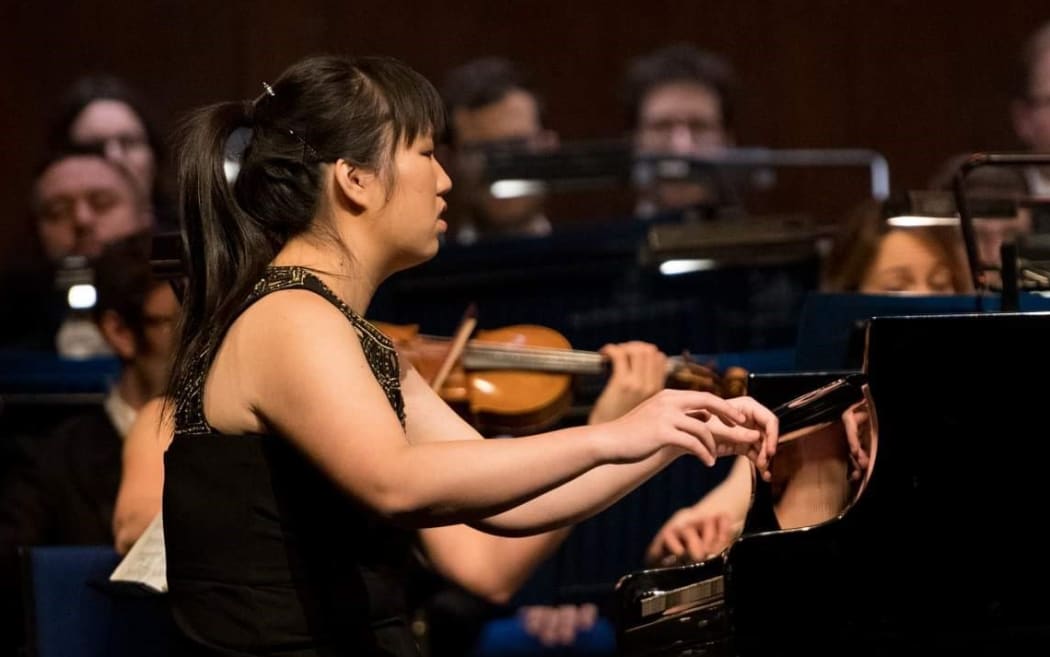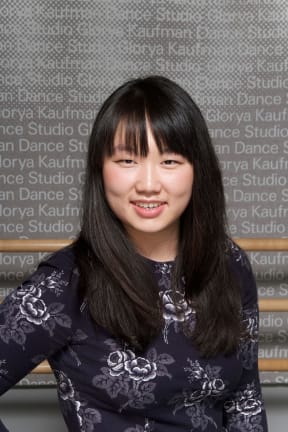Pianist Sylvia Jiang makes her debut with the Auckland Philharmonia in Liszt's Second Piano Concerto. The orchestra rounds out the programme with music by Stravinsky and Brahms.
The orchestra's Music Director Giordano Bellincampi conducts.

Sylvia Jiang Photo: Sylvia Jiang
STRAVINSKY: Symphonies of Wind Instruments
Igor Stravinsky wrote his Symphonies of Wind Instruments in 1920 in memory of Claude Debussy. The final section of the work, a chorale, was originally published as a piano piece in a magazine honouring the recently departed Debussy. It sat alongside pieces by Ravel and de Falla.
In the title, Stravinsky used the word “symphonies” in its original Greek meaning: “sounding together”, rather than to indicate that he was writing what we’d normally expect a symphony to be.
The work got an unfortunate premiere performance at the Queen’s Hall in London in 1921. It seems that some in the audience thought that Stravinsky might have been playing a joke on them – maybe they were misled by the title “symphonies” … it was not what they were expecting from him and there was laughter and hissing.
LISZT: Piano Concerto No 2

Sylvia Jiang Photo: Sylvia Jiang
Liszt was well able to toss off the writing of a piece of music quickly. He did so on many occasions, writing a trifle to catch on to a current hit tune for one of his own recitals perhaps. But he agonised over the composition of his bigger, more serious works. It took him 22 years to finish off this concerto. He started in 1839, but didn’t get it into its final publishable form until 1861.
Throughout that time his title for it was “Concerto symphonique” giving the hint that he was thinking of this work in different terms to what was expected of a concerto at the time, which was almost piano versus orchestra. He wanted the piano to be a featured soloist of course, but he wanted to integrate it more into the substance of a symphonic flow.
But even his view of what a symphony meant was unconventional. This is one of the reasons why it took him so long to write it perhaps. He was grappling with the symphonic form itself. What he came up with here is a single movement work with six sections and one of the most important aspects binding the whole thing together is the idea of thematic transformation.
For example, the gentle melody on the clarinet at the beginning comes back again and again in different guises. Later on you’ll even hear it as a muscular march for full orchestra. And after that, he reimagines it again as the piano fragments it and plays it in an emotional outpouring over left-hand arpeggios.
New Zealand pianist Sylvia Jiang is a recent graduate of the Juilliard School. She is also currently serving as a recipient of an Artist Diploma from the Peabody Institute at John Hopkins University. This performance is Sylvia’s APO début.
GRIEG: Lyric Piece Op 54 No 4, Nocturne
An encore from Sylvia Jiang.
BRAHMS: Symphony No 4 in E minor
Johannes Brahms wrote his fourth and final symphony in 1884 and 85. Like the other three, it’s a popular staple in the concert hall. In fact it’s only four years since the Philharmonia last played it.
It’s magnificent of course … many would say it’s one of his great masterpieces. But its popularity is possibly surprising for two reasons.
Firstly, don’t go expecting many jollies … it’s a largely sad and tragic work. It’s based in E minor, but even when it goes into the major it’s tinged with melancholy as in the second movement; or it comes off as rough and boisterous rather than joyous or fun as in the third movement Scherzo.
The other factor is that it’s a densely complex work. After hearing the first play-through, his friend and one of his greatest supporters Eduard Hanslick famously remarked, “I had the feeling that I was being given a beating by two incredibly intelligent people.”
What was he meaning by “two” people? He was possibly referring to the fact that in Brahms – and especially in this symphony – he saw an artist who was faithfully and expertly looking back and honouring the music of the classical masters, Haydn, Mozart and Beethoven, while at the same time forging forward with new ideas and new ways of expressing them.
None other than Arnold Schoenberg admired the work. He wrote that the sorts of things that Brahms was doing with melodic fragments in the symphony were similar to the sorts of things he, Schoenberg, was doing in his 12-tone compositions. “Brahms the Progressive” he called him.
The final movement is notable for its form … it’s written as a passacaglia: 30 variations on a short 8-bar harmonic sequence that Brahms based on a Bach chorale.
Recorded by RNZ Concert, Auckland Town Hall, 21 July 2022
Producer: Adrian Hollay
Engineer: Rangi Powick

